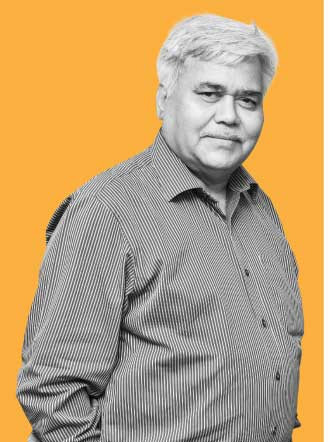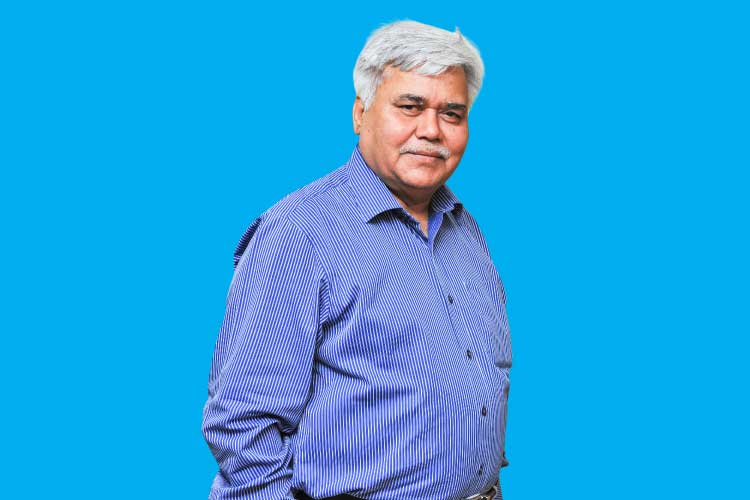‘TRAI’S DECISIONS HAVE ALWAYS BEEN THE OUTCOME OF A TRANSPARENT CONSULTATION
PROCESS’
The outgoing Chairman of the Telecom Regulatory Authority of India (TRAI), RS Sharma talks to Ruhail Amin about his five-year stint, sectoral regulation, the digitisation of TV and maintains that the body has always promoted transparency and followed the concept of light touch regulation
Q] What would you call the key achievements of your five year stint at TRAI?
TRAI is an autonomous statutory body and functions as per the mandate given by the TRAI Act, 1997. The primary function of TRAI as sector regulator is to create a conducive environment to all service providers so that world class telecommunications services are made available to the consumers at affordable prices.
A lot of efforts have gone into achieving the stated objectives during the last five years. This is evident from availability of affordable 4G services across the country and complete digitisation of B&CS services. Internet data utilisation per subscriber has been the highest in the country.
Many recommendations have been given to the Government related to the telecommunications as well as the broadcasting sectors including those on net neutrality, ease of doing business, national digital communication policy, promoting local telecom equipment manufacturing, spectrum auction and use of new bands, privacy security and ownership of data,
grievance redressal in telecom sector, proliferation of broadband, reforming guidelines for merger and acquisitions. In the last few years, TRAI has also experimented with use of latest technology for regulation like crowd sourcing of data and use of distributed ledger technologies. Nevertheless, these outcomes are the team efforts and I will not like to tag them with my individual achievements.
Q] There are some industry voices that say after 16 years of sectoral regulation, TV digitisation is a reality, but the same problems persist. Your thoughts?
Digitisation of the broadcast sector has been one of the demands of all the stakeholders and accordingly, TRAI had recommended to the government in 2011 for digitisation of the broadcasting sector. Digitisation was completed in 2017 in four steps and all the stakeholders played an important role. The digitisation was encouraged to fulfil the following outcomes:
1. Enhance the capacity to carry more TV channels on multi-system operator platforms to facilitate provision of more TV channels.
2. Improve the quality of viewing and facilitate launch of HD and higher modulation TV channels.
3. Achieve addressability to find out unique subscribers in a network.
4. Provide choices to the consumers to view what they want.
5. Bring transparency in financial transactions to secure government revenue.
With completion of digitisation, most of the objectives have been fully achieved though some are under implementation as of now. So I am unable to agree that the same problems still persist. India is a big country and digitisation of the broadcast sector has been completed in a record time frame of approximately five years. The business practices and models are changing for the betterment of all stakeholders. The fruits of digitisation in the form of affordable prices, choices and better quality are being felt by the consumers at all levels.
Q] Do you think there is a huge trust deficit between broadcasters and the regulator?  Absolutely not. TRAI has always promoted transparency, non-discrimination and has followed the concept of light touch regulatory regime. There is a consistent endeavour for the promotion and growth of the broadcasting sector.
Absolutely not. TRAI has always promoted transparency, non-discrimination and has followed the concept of light touch regulatory regime. There is a consistent endeavour for the promotion and growth of the broadcasting sector.
All decisions of TRAI have always been the outcome of a transparent consultation process and due opportunity has been given to all stakeholders to deliberate on various issues. As such, there is no question of any trust deficit.
Q] How is TRAI going to restore confidence to encourage investment and innovation?
This question is based on wrong understanding of the sector. The transparent and non-discriminatory approach in decision making process, coupled with provisioning of level playing field for all stakeholders, investment, initiative and innovation from stakeholders are never lacking.
The past few months have seen some slowing down of growth in the sector due to the COVID-19 pandemic. As we are in the unlocking stage, things are getting back to normal and the growth in the sector would catch up to pre-COVID levels.
Q] TRAI’s recommendation on voice OTT (Over The Top) has not yet been out and in the meanwhile TRAI has also made its stand clear on net neutrality. So why does TRAI want to regulate video OTTs where the market conditions play out well and the consumers are happy with the services that they are getting?
The question seems to be based on certain presumptions and lack of understanding of the issue. TRAI issued a consultation on OTT services for the telecom sector particularly focusing on same services, same rule.
The issue is under consideration of TRAI. As far as net neutrality is concerned, TRAI has already given its recommendations to the government long ago and it has been broadly accepted also. The two issues are quite unconnected and it is not clear as to what is the intent of this question.
Further, as far as regulation of OTT services in broadcast sector is concerned, neither any consultation has yet been started in this matter nor any regulatory interventions have been done in this space. As such, I am not aware as to how or on what basis you reached to the conclusion that TRAI wants to regulate video OTTs.
Q] What’s your view that TRAI is okay with bundling in the telecom industry but against the same in the broadcasting sector?
The nature of services, type of the product, model of service provisioning and challenges in a particular sector are the cornerstones to determine the regulatory framework and interventions that may be required in a sector.
The service stack in telecommunication sector and broadcasting sector are completely different. Further, a service provider in the telecom sector provides all essential services to consumers whereas in broadcasting sector there is huge interdependence on various stake holders to provide broadcasting services. Since market conditions, offerings and challenges are different in different sectors, the regulatory requirements are also different in view of the very nature of the two sectors.
As far as broadcasting sector is concerned, both broadcasters as well as MSOs are permitted to offer the bundled services and, therefore, the assumption that TRAI is against bundling of services is not based on facts. However, while bundling services, customers must be given choice and their choice must be respected.






















